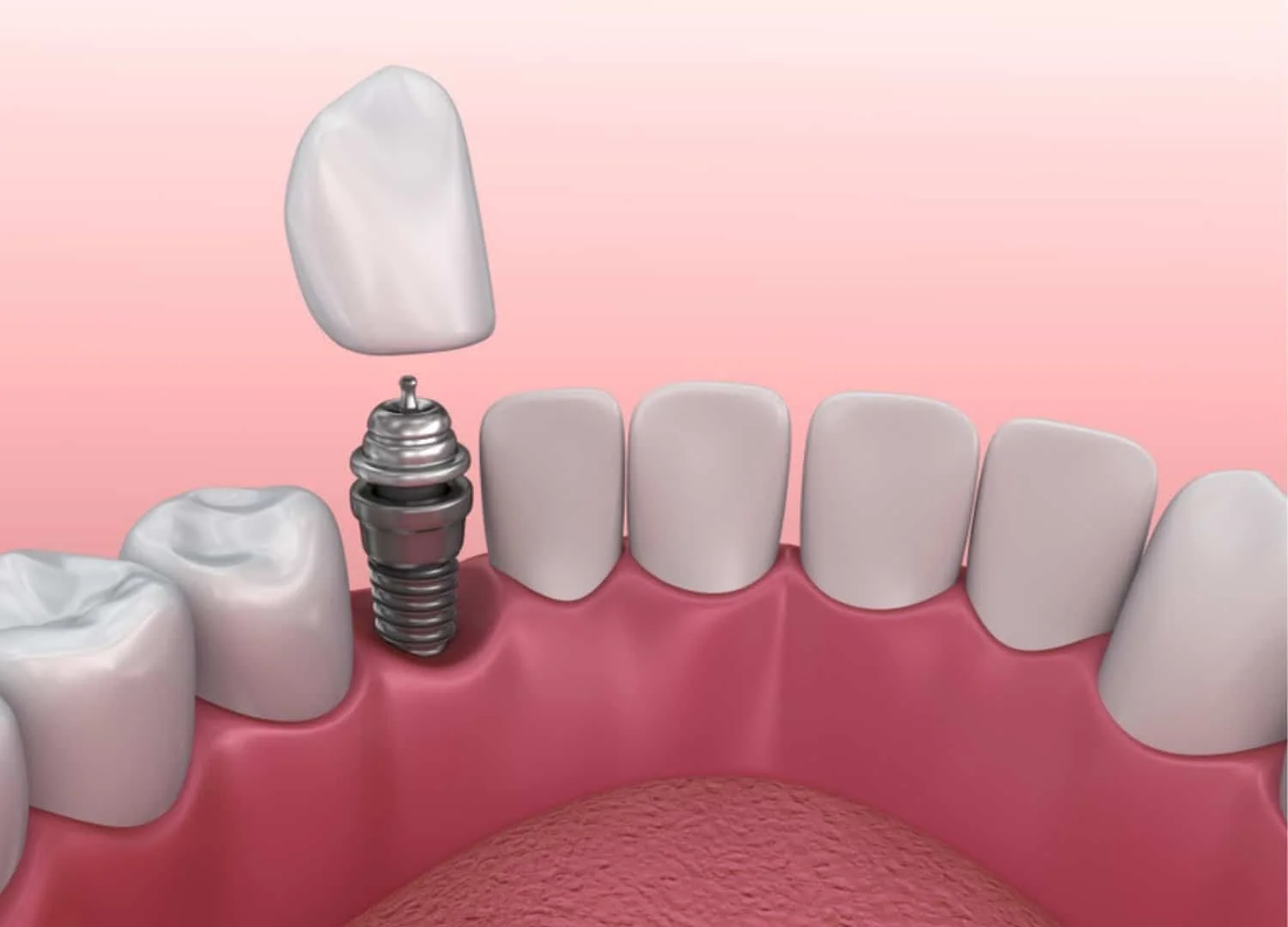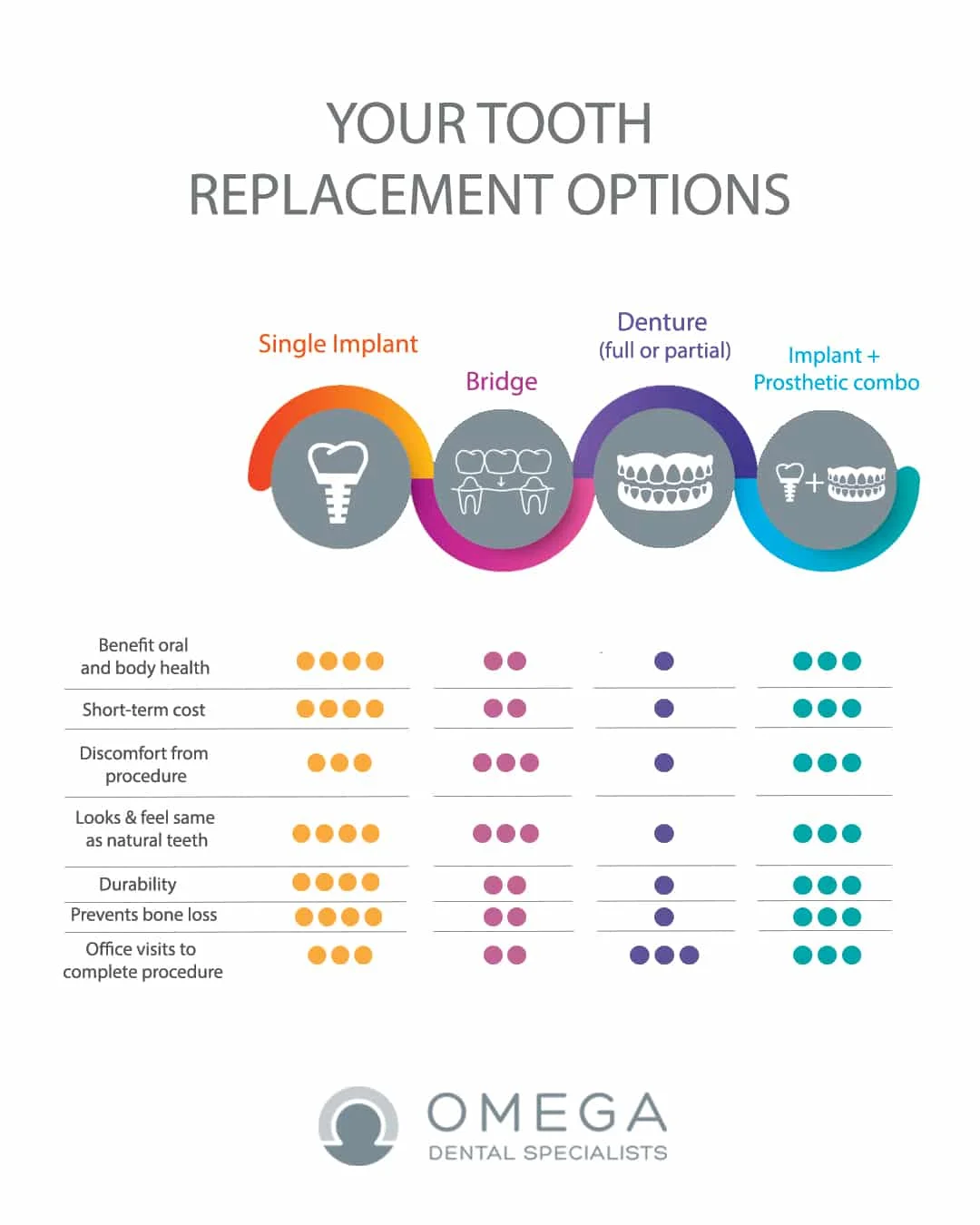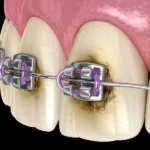What Can You Do for Missing Teeth?

Oral hygiene is one of the most socially important concepts of this day and age. People are very judgmental when it comes to missing teeth. That is a fact of life—if your teeth are crooked, chipped, or yellow, people will disapprove. Because of this, treatments like dental implants improve self-esteem. Dental implants are a specific procedure to improve the health and look of teeth, and they are definitely deserving of consideration if you’re in a situation where they are suggested. When making such a pivotal, life-changing decision, it is strongly recommended that you keep these things in mind.
Table of Contents
What is The Cost of Denture?
A partial denture gets built with either a plastic or acrylic material molded over a metal framework. They offer the same removability that a dental flipper provides more stability. The cost of these dentures ranges from $2,000 to $4,000. The addition of attachments stabilizing the denture increases the cost.
What is The Cost of Dental Bridge?
A dental bridge consists of a series of crowns placed together and held in place by permanent teeth next to spaces in the patient’s mouth. Patients need healthy teeth to anchor the bridges. Each tooth in the bridge costs anywhere from $700 to $1,400.
What is The Cost of Dental Implants
Dental Implants consist of metal posts implanted into the jaw to root replacement teeth. Implants are healthier for gums and surrounding teeth since the gums remain uncovered and there’s no need to alter permanent teeth. Patients need a fully-developed healthy jaw to support insertion of the implants. Each implant costs anywhere from $1,500 to $6,000.

Today more than ever before those who require dental work have more options than ever before when it comes to replacing missing teeth. In days gone by, the only choice for those who have lost their teeth was to use dentures or a partial denture. Today the choices are vastly expanded providing dental patients with many opportunities to return to a more normal way of life. This includes having a beautiful smile and full oral functionality. One example of this is the advent of dental implants. First, let’s take a look at dentures and how they too can help dental patients restore functionality and a better outward visual appearance.
While somewhat of a personal question, our doctors will let you know the pros and cons of choosing one option over the other. It is important to remember that dental implants offer more latitude regarding tooth replacement. This is because implants are going to be far more stable and help to preserve bone and they are entirely more predictable. As an added benefit, they do not cover the pallet, so no sense of taste will be lost. Talk with your dental care provider to make the best possible choice when it comes to dental implants and dentures.
Dentures
Full dentures can be used to replace teeth in both the upper and lower jaw. Conversely, partial dentures can be used when just a few teeth are missing in either jaw. As a note, when the term complete dentures are used it is typically indicating the replacement of both the lower and upper teeth using something known as a full denture. What makes partial dentures unique is that they rely upon remaining healthy teeth for support and retention. In this case, remaining teeth must be stable to support a partial denture. This helps to ensure that no movement of the denture occurs.
Dental flipper
A dental flipper provides a fast and cost-effective solution for filling in spaces left by missing teeth. Patients should consult their dentist on all options available and decide if this type of appliance would work for them.
Partial Denture
A partial denture can either be permanent or removable. Removable dentures are simply taken out whenever cleaning or storage overnight is required. A partial denture will usually have some metal frame on the inside for structural support. In this type of setup, the false teeth portion of the denture will have hooks, metal clasps and other mechanisms designed to attach to the natural teeth providing much-needed support. In contrast, a complete set of dentures replaces all teeth. This type of arrangement relies upon suction when used on the upper jaw while a lower denture relies on a secure and tight fit. Those with full lower dentures can also use some degree of muscle control to increase stability.
In most denture setups, they cover the entire pallet or what is known as the roof of the mouth. They also typically cover all of the gums. One consideration in this regard is that some degree or taste sensation can be expected to be lost. Some estimates suggest that up to 75% of one’s ability to taste is lost when using a full denture. Other estimates report a much lower percentage. Dentures can be labor-intensive because they must be removed every night before going to sleep. Removal is also recommended for cleaning. Perhaps one of the biggest struggles with dentures as people age is in keeping them securely in place for eating, drinking, talking and functioning normally.
Dental Implants
As a popular alternative to dentures, dental implants have become the new standard in today’s modern dentistry. While there are still instances and cases where dentures are preferred, dental implants are quickly becoming the option of choice for dental patients wishing to replace missing teeth. Dental implants are unique and highly desirable because of their predictability. For more than three decades they have proven to be an excellent way of improving oral functionality and outward visual appearance regarding a beautiful smile.
In most cases, a dental implant is comprised of a titanium fixture that resembles a post. This fixture is surgically placed into the jaw as a way to replace a few missing teeth or an entire set of teeth. There are many versions and types of implants in use today. A respected and experienced implant surgeon and the dentist can ensure that your work is done to the highest standards. Once implants heal they become directly bonded to the patient’s jawbone. In effect, they become an integral part of the jaw. Most importantly, this results in a reduction in bone loss in the area where the implant has been placed.
Implants are designed and intended to perform like anchors for everything from bridges to crowns and partial as well as full dentures. Providing a secure and stable platform for a wide variety of dental placements makes dental implants a valuable and important part of overall modern dentistry. The type of denture or tooth replacement required will usually determine how many dental implants are needed. For example, four lower implants would be required in most cases for a typical lower denture implant treatment. Often a snap system is used to connect implants to the inside of the denture. Once a successful dental implant and permanent or removable denture have been put into place, patients can enjoy normal eating, drinking, talking and routine oral hygiene.
What Do I Need to Know About Dental Implants?
The American Academy of Implant Dentistry has stated that it is incredibly important for you to make a specific appointment with an implant specialist if considering dental implants. The average cost of implants in Houston varies from person to person because the process itself is incredibly dependent on the circumstance of the individual. Therefore, to get a legitimate estimate on the cost of the procedure, it is imperative that you let an official oral surgeon examine the damage.
Dental implants are designed to blend in with what teeth currently exist in your mouth, and they are customized to fit perfectly. They are grafted to the bone via what is commonly referred to as a bone graft, and this means that they will not slip or move around the way that dentures and other dental replacement options do. They are more money upfront, but they are the better option in the long run.
This particular form of replacement due to damage or what have you is substantially better for the self-esteem. As previously mentioned, the cost of dental implants is entirely dependent upon the exact circumstance surrounding the person, but they last longer than any alternative and provide a sense of security not present with other options. Because of the bone graft, the dental implants fit securely and snugly inside of your mouth, and they will not slip and slide due to chewing or other mouth-based activities.
What Are My Options For Dental Implants?
The initial treatment plan for dental implants should include the ideal implant size, based primarily on biomechanical and esthetic considerations. In traditional prosthetics, when a tooth is replaced, abutment teeth are already provided by nature with wide posterior abutments for posterior teeth. When teeth are replaced with dental implants, the implant team should preselect the ideal abutment size, based on the ideal size for an esthetic restoration within biomechanical guidelines.
The size of a dental implant used to be determined primarily by the existing bone volume in height, width, and length. The surgeon would select longer implants in the anterior regions of the mouth and shorter ones in the posterior areas because of the limits of the mandibular canal and maxillary sinus. The width of the implant, also determined at surgery, would relate to the existing width of available bone, and one diameter (4 mm) implant would be used in most all situations.
Over the years, dental implant treatment plans incorporating biomechanics have been advocated to decrease the most common complications—those related to stress. The prosthesis first is planned, including whether the restoration is fixed or removable, how many teeth are replaced, and the esthetic demands. The patient force factors are then considered to evaluate the magnitude and type of force applied to the restoration. The bone density is evaluated in the regions of the potential implant placement.
The key implant positions and the implant number are then selected in relation to the patient force factors and the bone density in the implant sites. The next consideration in this ideal treatment plan sequence is the implant size. Dental implants function to transfer loads to surrounding biological tissues. Biomechanical load management is dependent on two factors: the character of the applied force and the functional surface area over which the load is dissipated.
The implant size affects the functional surface area that distributes a load transferred through the prosthesis. A comprehensive approach to the overall dental implant size begins with the identification of clinical problems to be addressed. Fundamental scientific principles related to force and surface area are then combined with engineering principles to pursue the desired clinical goals. Esthetic guidelines are also a part of the evaluation.
What are the advantages and Disadvantages of a Dental Implant?
Dental implants were surgically placed via bone integration to the jaw feel like your missing teeth. They feel comfortable and natural, and they don’t make you feel self-conscious. You can kiss someone without worrying, and the teeth fit easily into your mouth. Oral surgeons examine your specific situation and create the perfect implants to make it seem like you never lost any teeth, to begin with.
The way that other replacement options work is significantly more inconvenient than dental implants. We thrive on convenience here in America, with fast-food restaurants and quick gas stations and grocery stores with more than just groceries. It is no surprise that when it comes to something like tooth replacement, we crave convenience as well. Not having to clean a pair of dentures every night and being able to jump right back into the swing of things helps with the adjustment.
The success rate of dental implant surgery is 98%. This is not surprising given the relative ease of the procedure itself and the amount of skill and knowledge required to perform this in the first place. There is virtually no risk to this oral surgery, which is relatively painless. The appeal to the ease of the procedure is helpful when trying to make a decision about these sorts of circumstances.
Most insurance does not cover the cost of dental implants due to it being a rather recently developed procedure, but some will depend on the circumstance surrounding the loss of the tooth. Insurance companies and qualified oral surgeons will be able to answer any inquiries about insurance coverage regarding this kind of operation, though.
What are the main reasons for dental implant failure?
The presence of fibrous tissue has long been known to decrease the long-term survival of a root form implant. Excessive loads on an osseointegrated implant may result in mobility of the supporting device, even after a favorable bone-implant interface has been obtained. Although several conditions may cause crestal bone loss, one of these may be prosthetic overload. Excessive loads on the bone result in increased strain conditions in the bone. These strains on the bone may affect the bone remodeling rate and cause overload, which results in the loss of bone. The amount of bone strain is directly related to the amount of stress applied to the implant-bone interface. The greater the stresses throughout the implant-bone interface, the greater the risk factor for crestal bone loss and subsequent implant failure. Therefore, the stress and strain relationship has been shown to be an important parameter for crestal bone maintenance and implant survival.
The ideal size of the implant body should be incorporated into a treatment plan, rather than the surgeon determining this dimension at the time of surgery. The initial size of an implant is determined in both length and diameter. In a two-stage healing protocol, the ideal implant length should be 12 mm to 16 mm. The softer the bone, the longer the implant requirements. The greater the bite force, the longer the implant dimension. The diameter of the implant is also an important part of an ideal treatment plan. The diameter of an implant has a surgical, loading, and prosthetic consideration. In the initial treatment plan, the loading and prosthetic components are most important. The width of the implant is directly related to the overall functional surface area.
As a general rule, the narrowest implant is found in the anterior mandible, followed by the anterior maxilla and the posterior mandible; the widest diameter requirements are found in the molar region of the posterior maxilla. The prosthetic aspects of the implant width are primarily related to the esthetics of the emergence profile, the force on an abutment screw and the strength of the implant components.
As a result, wider diameter implants are selected in the molar regions; standard diameters in the canines, premolars, and maxillary central incisors; and the smallest size implants in the maxillary lateral and mandibular incisors. The natural dentition follows the guidelines established in the implant size treatment plan consideration. The correlation is most likely found because of the biomechanical relationship of the amount and type of the forces in the location of the jaws and the type of the bone in the region. These guidelines are consistent when engineering principles determine tooth size.
When you consider whom to choose for having an implant procedure, choice of dentist is critical. Do not fear to ask about training and specialized experience of the dentist. Your Omega Dental Specialists will keep you informed of how implant size determination will be made in your individual case to achieve the most optimal outcome.
How Do Dental Implants Work?
The dental implants are titanium rods grafted to the jawbone, and the bone grows around the rod over the course of ten weeks. An abutment is then fixed to the rod, which allows for a crown to be placed in the mouth.
Dental implants are less painful than a routine tooth extraction. Local anesthesia is used to numb the area beforehand, and most people report feeling very little pain and discomfort during the surgery.
Crowns are matched to the teeth both regarding color and shape. The dentist will make projections of the missing teeth and create durable replacements that fit comfortably in your mouth. They attach to the abutment and do not have to be connected to any other teeth. This makes them more appealing than dentures or bridges. They also look more natural due to the effort put into replicating the exact color of your current teeth.
There is a multitude of benefits to choosing dental implants over any other form of replacement for teeth. The improved quality of life in conjunction with convenience is enough to convince the majority of individuals in need of this sort of procedure. The procedure should be performed by a certified oral surgeon with experience and knowledge about bone grafts.
The cost of dental implants can be worked out, but it is incredibly hard to predict. A single crown can cost anywhere from 1000 to 3000 dollars, so the amount of teeth missing is worth taking into consideration when this procedure is concerned. The procedure itself can be close to ten thousand dollars, depending on the physician and the amount of effort required. Dental implant surgery is part science, part art, part material good. Many people forget that they are not merely purchasing the necessary goods, but also the service itself.
Dental implants can seriously impact health and happiness in a positive way. They are the latest and greatest cosmetic surgery that legitimately helps with bone and tooth decay. Care routines are personalized and custom fit to your exact scenario, and there is no greater motivator for taking care of your teeth than knowing that you paid quite a pretty penny for them. They will last practically forever, and this investment could lead to a plethora of engaging and beneficial opportunities in your life that would not be present otherwise due to the stigma against people with perceived poor oral hygiene.
This is a quality procedure that should be taken into consideration by anyone with missing teeth.
February 15, 2023What Is The Average Cost Of Braces In Houston?
February 01, 2023What You Need to Know About Dental Hygienists?
January 30, 2023What to Expect During the Wisdom Teeth Extraction
October 23, 2022Wisdom Tooth Removal Cost
October 23, 2022Dental Emergency, Open Saturday
October 23, 2022Full Guide to Dental Crown
July 26, 2022Should I Have My Wisdom Teeth Removed Before I Get Braces?
July 26, 2022Complete Guide to Wisdom Tooth Removal





